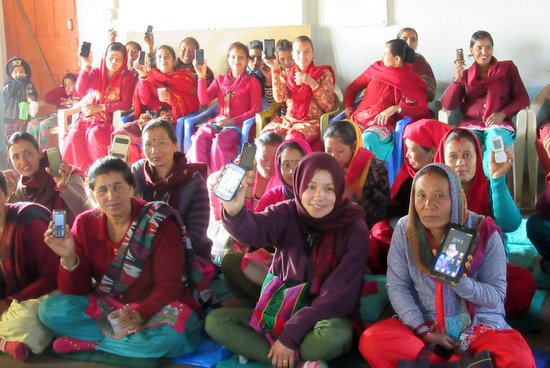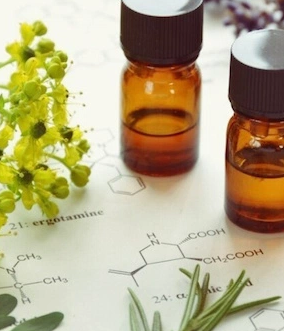This week marks the Third Global Conference on Agricultural Development, jointly organized by the Global Forum on Agricultural Research (GFAR) and CGIAR Consortium.
To bring youth into the discussion, six young agripreneurs have been awarded a US$5,000 seed fund to facilitate the startup of their agribusiness project, and will be attending the conference in Johannesburg to receive their first induction training and network with agriculture experts from all over the world.
For the next year, these agripreneurs will be will mentored by Farming First supporter YPARD (Young Professionals for Agricultural Development) – who will train them on new ways to advocate and network using innovative communication and networking tools.
Meet the finalists and follow the discussion using #GCARD3!
 Jony Girma: No trees, no bees. No honey, no honey!
Jony Girma: No trees, no bees. No honey, no honey!
Ethiopia has huge potential for supplying high value bee products like honey, beeswax, and propolis. There are an estimated 5.15 million hives in Ethiopia, almost all of which are maintained entirely by traditional methods by approximately 1.4–1.7 million beekeeping households. Beekeeping does not require fertile land, a large area, or much initial capital. This makes the sector attractive for small farmers with limited resources. However, despite its potential role in the development of the rural economy, the beekeeping sector faces a number of problems, such as lack of beekeeping skills, inappropriate production technologies, weak market access, weak price incentive systems, and limited financial capacity of beekeepers. Jony has been working with beekeepers to combat these challenges. With his $5,000 prize money, he intends to establish a modern, well-organized apiary site and construct a training room and information centre for local beekeepers. He will also purchase beekeeping equipment which he will loan to beekeepers. “Unless beekeepers enjoy an income, they don’t have an interest in supplying honey,” Jony comments. “I have planned to train and certify 2,000 beekeepers as suppliers of bee products. Each beekeeper will plant and grow multipurpose trees ten times the number of beehives they have. As a result of this approach I will have certified beekeepers who can generate income to improve their livelihood and conserve the natural forest.”
and construct a training room and information centre for local beekeepers. He will also purchase beekeeping equipment which he will loan to beekeepers. “Unless beekeepers enjoy an income, they don’t have an interest in supplying honey,” Jony comments. “I have planned to train and certify 2,000 beekeepers as suppliers of bee products. Each beekeeper will plant and grow multipurpose trees ten times the number of beehives they have. As a result of this approach I will have certified beekeepers who can generate income to improve their livelihood and conserve the natural forest.”
 Nikki Pilania Chaudhary: The future of Indian cattle
Nikki Pilania Chaudhary: The future of Indian cattle
Nikki has been involved in dairy farming since 2011 at her family farm in the rural part of the North West Indian State Uttar Pradesh – she manages a dairy unit of 50 “exotic” Holstien Friesian and Jersey Cross cows. However, she soon realised that these cows require a very closely controlled environment, in order to produce the increased amount of milk they were purchased for. Her family’s farm has a modern dairy shed comprising of fans, foggers, an automatic milking unit and all other facilities for efficient operations. But Nikki realises this may not be an option for many smaller farmers. She will therefore use her start up seed money to examine the high yielding Gir breed of cattle which is native to India, and is used in markets from Australia to Brazil for their resilient qualities such as tick resistance, heat tolerance and the ability to flourish even with inadequate feeds.
https://www.youtube.com/watch?v=bl8un7OcmzU&feature=youtu.be
Lillian Beauttah: The African Desert Greenhouse
Lillian Beauttah is a civil engineer turned social entrepreneur and intends to find sustainable solutions to feed Africa. She wants to build “desert green houses” based on Terrarium Crop Cultivation Technology. The Terrarium is a glass unit containing an engineered soil layer that is closed off entirely to the natural elements. Within the unit, water vapour is transpired and condensed on the glass surface producing water that enables plants to live. This cyclic water

Terrarium Small Scale Model Showing Bean and Maize Plants at 7 Days After Planting
generating process works well, as the humid atmospheric conditions within this artificial ecosystem mimics that of the earth creating viable crop growing conditions that require a minimal amount of water. TCCT is designed specifically for low maintenance and intensive farming practices making it suitable for those nomadic inhabitants of ASALs with little to no agricultural expertise.
“We are currently at a development phase that includes rapid prototyping and testing using small-scale terrarium replica models, through which establishment of the most favourable crop growing conditions in terms of temperature, humidity and soil type is being undertaken,” says Lillian. Her seed start up money will be used to move the research and development stage forward. The result could mean that harvests can take place in dry regions 3-4 times a year, instead of twice a year.
 Anil Regmi – Ag info at just a touch
Anil Regmi – Ag info at just a touch
Anil is only 24, but the app he has developed has already been downloaded 17,000 times. Smart Krishi is a mobile app that serves as a platform for farmers and any citizens interested in agriculture to get information with a single touch. Using a Wi-Fi/3G connection, the app automatically syncs with the latest information in the Smart Krishi database. In places with no internet connectivity, the contents can be easily viewed in offline mode. This feature eliminates the need of having a 24-hour internet connection in technology-limited settings. Farmers can send their location and can get location-specific information on crop and farming techniques. They can also tailor the app to follow and subscribe to the latest news and market prices of agricultural and horticultural products. With the seed start up money, Anil wants to action some of the suggestions he has had from farmers using the app. This includes redesigning user interface of the app and content to address illiterate users in underdeveloped countries, designing services to automatically fetch the daily market price of agricultural products, and an interactive discussion portal.

Josine Macaspac – Saying goodbye to pests in the Philippines
In the Philippines, losses from post-harvest and storage due to pests for corn can reach as high as 50%, resulting in massive reduction in total yield and profits especially in rural areas where storage facilities do not have adequate protection against these pests. Current methods to combat this are expensive, which is why Josine has developed a Mechanical Post-Harvest Pest Removal System. “The mechanics of the device is simple,” she explains. “The farmer loads the produce (grain / corn / etc.) into the device through a hopper and using a foot pedal, power the device. The produce will be kept in a large compartment with adjustable perforations at the bottom, so that it can be used for a variety of grains, as well as corn. When the machine is operated through pedal power, the main compartment will start vibrating the produce, effectively dislodging the pests, which will then fall through the holes and into a collection tray below.” With the help of this device, a farmer can effectively clean 600 kilos of rice or 12 sacks of produce in a single hour without the use of electricity or expensive fuel.
 Kellyann Allicot – Skincare from the farm to the face
Kellyann Allicot – Skincare from the farm to the face
Kellyann loves nature, agriculture, science, and business. Equipped with a Degree in Chemistry and Biology, and a Diploma in Cosmetic Science – she is now ready to combine those passions by setting up her own skincare brand. Kellyann wants to support farmers to grow herbs that can be distilled for the production of hydrosols and essential oils. “The

Ibis Wellness has already incorporated local goat’s milk into the production of soaps and lotions.
passion and motivation to execute this project stems from the the desire to illustrate that agriculture is one of the necessary pillars, in industries which may seem unrelated,” comments Kellyann. “It’s also to provide new revenue streams for farmers both locally and regionally. Moreover the project wishes to attract youth and more women in Barbados and the Caribbean to this arena, through the provision of a more interesting spin on the endless possibilities agriculture provides.” Kellyann will use her start up seed money to purchase the distiller, procure the necessary raw materials and train farmers. The remaining money will be used to set up a website for her brand: Ibis Wellness Inc.



